#shinto faith
Explore tagged Tumblr posts
Note
What are some good English resources for Shinto?
hello!! so i mainly use accredited japanese resources, buuut i do recommend these books!!
https://www.amazon.com/Fox-Jewel-Meanings-Contemporary-Japanese/dp/0824821025
https://www.amazon.com/Shinto-Shrines-Second-kenji-Kato/dp/4093887454
they’re not 100% perfect books, but they’ll do just the trick. if you want other resources i definitely recommend asking @shintoinenglish because i’m sure they know lots of stuff to recommend!
5 notes
·
View notes
Text
Legit question for the religious here.
50 notes
·
View notes
Text
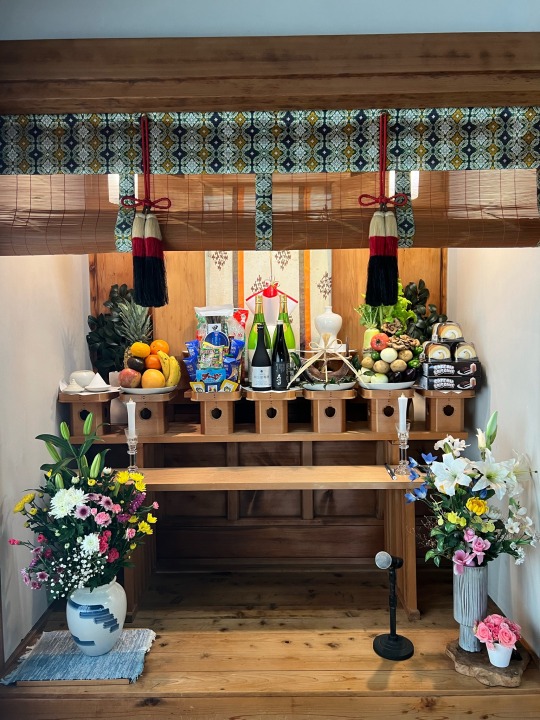
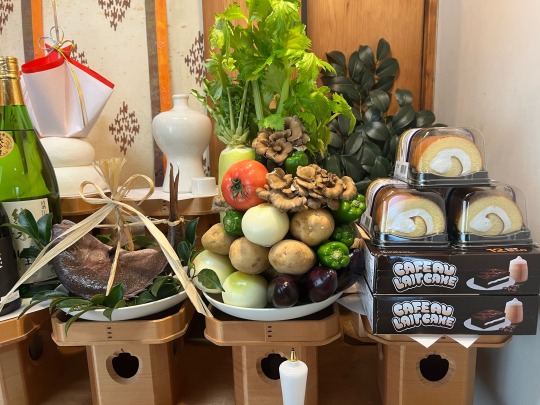
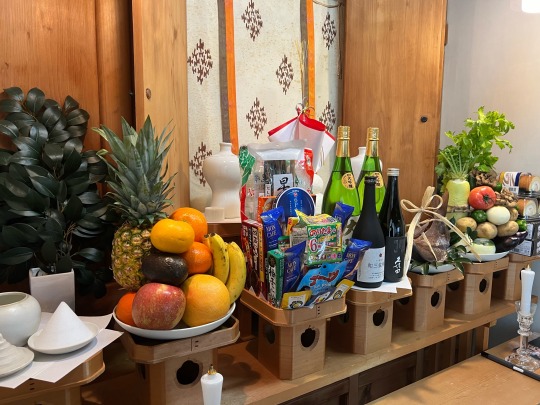

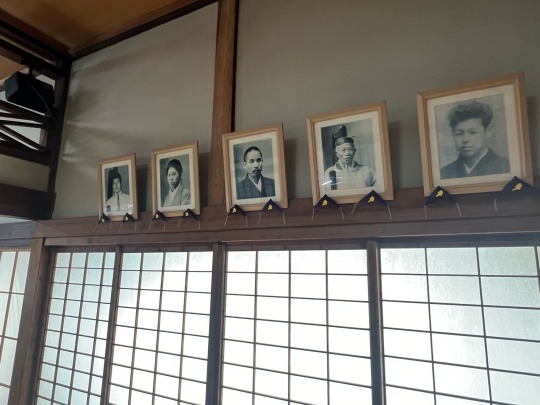


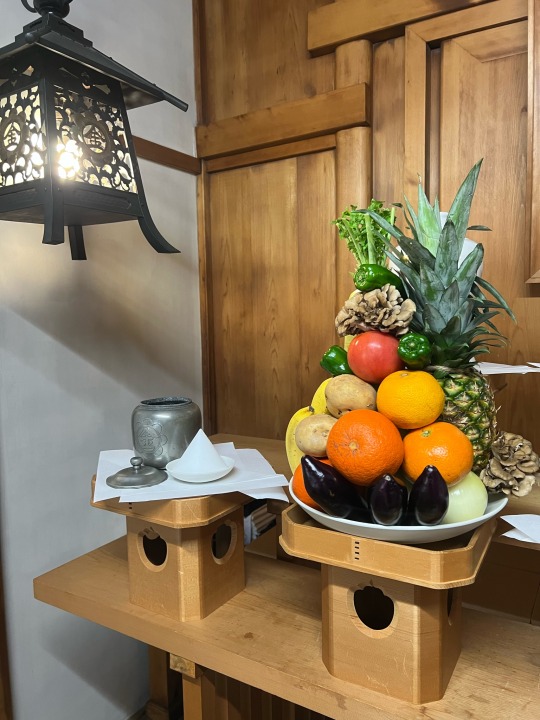
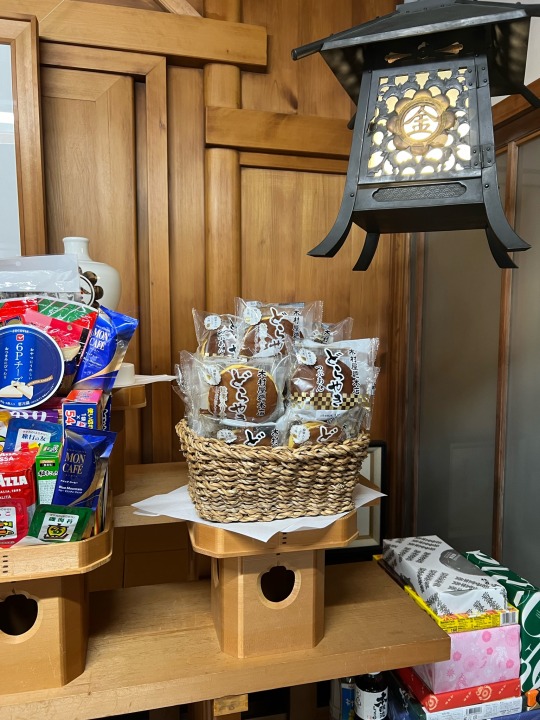

Happy Spring Equinox!
Today is the Spring Grand Ancestor Ceremony
春季霊大祭
We completed all the offerings, now time for the ceremony soon!🌸🌻
#shinto#shinto shrine#konkokyo#shintoism#konko faith#spring equinox#金光教横須賀教会#金光教#神道#春分の日#お供え物#offerings#altar
85 notes
·
View notes
Text
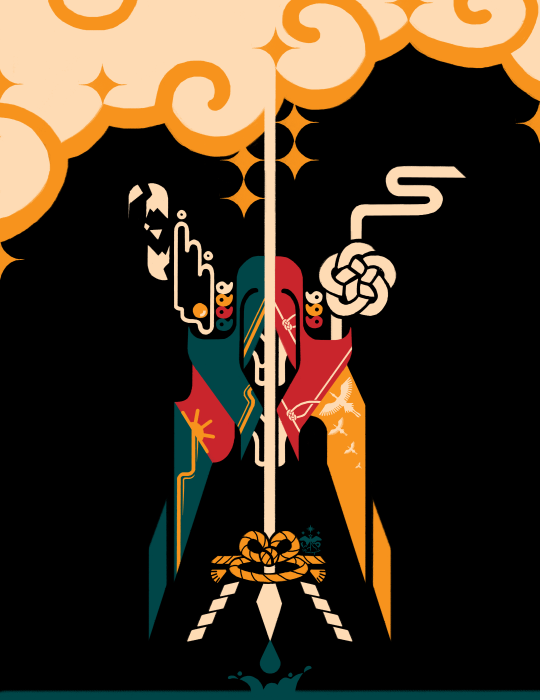
Abstract Kuniumi
Commission Info
#art#my art#artists on tumblr#shinto#izanami okami#izanagi okami#kojiki#japan#japanese mythology#I've been on a Shinto roll lately#only my faith is bringing me peace these days /lh
69 notes
·
View notes
Text

this card's name is Asura Priest. I like that
#yay for hinduiam rep in a children's card game#we got the abrahamic religions based cards as well as buddhist and shinto based as well#and i think celtic guardian has to do the irish pagan faith as well if my memory isn't messed up#i also like the colours they used. reminds me of the evil dudes from all those krishna animated movies. i watched soo many of those#yugioh#cide watches yugioh#cide watches yugioh dm#yugioh duel monsters#yugioh dm
14 notes
·
View notes
Text
Inari Okami
Finally made my example post! This is free for everyone to view, of course. Please consider supporting me as I do research and write.
29 notes
·
View notes
Text
NO, REALLY. TELL ME ABOUT YOUR RELIGION.
I'm coming to an understanding that I'm on the spectrum somewhere and religion is my special interest. Like, the amount of information I possess on all kinds of Christian denominations is not normal, I'm realizing. Between all the experimentation my family has done, the invites from friends that I always accepted, my own experimentation, being in a fringe Christian community that many people don't really recognize as Christian, living abroad in South America to see the permutations of Christianity that exist there, and deep dives I've done on my own into various religious movements my ancestral family members have belonged to, I've got a library in here 👉🧠👈 on various Christian traditions. It also includes Judaism and Biblical Hebrew (which I did in college), and what I'll call a trinket box of stuff I've collected about Islam and Buddhism from the wild. I want to know more about Islam inside and outside of the Middle East, as well as more east Asian religions I've largely only been exposed to by name only.
I probably(?!) know more than the average person on a large number of Christian traditions. I always want to know more. I'm in a constant state of trying to get people to infodump on their religious traditions in a culture that teaches (but in no way enforces) that it's rude to talk about religion.
#interfaith#religion#faith#Islam#buddhism#hinduism#shinto#I don't even know what to Google to learn more about ready Asian religions
45 notes
·
View notes
Text
御神米 Goshinmai in Konkokyo.
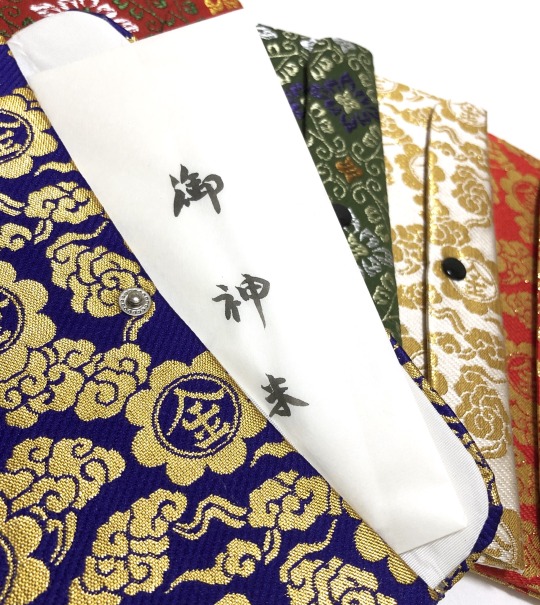

Resource: 御神米入 | https://okamotoshinki.com
Goshinmai(御神米 "Sacred Kami Rice", "Divine Rice") is an envelope of rice paper with a dozen of consecrated uncooked rice. Tenchi Kane No Kami prayers are performed over the rice. It is then washed with consecrated water and dried under the sun before being left to rest under the moonlight. The next morning, the rice is sprinkled with sacred blessed sake and placed in a small triangular white rice paper envelope.
Rice is a symbol of life and Goshinmai symbolizes the blessings of Tenchi (天地, Universe). Rice is grown because everything in nature works in harmony with each other, including humans. It represents the virtue of Tenchi Kane No Kami and the wish that these blessings are never forgotten.
Goshinmai can be forward by visiting a church and making a donation at the Toritsugi Mediation Desk, but it is also given to believers who ask for a blessing with a sincere heart. Goshinmai is believed to help with illness, recovery from injury, childbirth or difficulties in life.
One who receives Goshinmai can eat it either raw or cooked. The rice can be kept in a special pouch on one's altar, in one's purse, or on the windshield of one's car. All of this reminds us of Kami-sama's blessings and that He is constant presence with us.
The main thing is to take care of Goshinmai and cherish it, remembering Kami-sama's daily blessings.
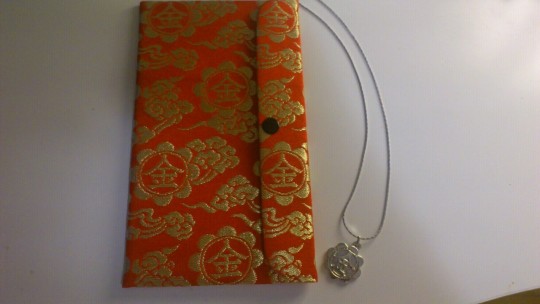

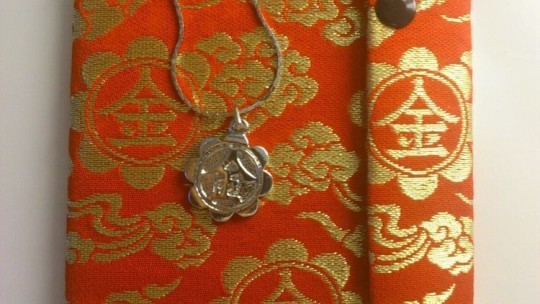
Rev. Olivia's Bernkastel(@livingwithkami) Goshinmai, photo by @konkokyo
13 notes
·
View notes
Text
there's too much animosity towards queer people who want to practice their faith/spirituality, both within their respective religions and within the LGBTQIA+ community.
we need to protect and lift up our queer siblings of faith.
our queer Christians.
our queer Jews.
our queer Muslims.
our queer Hindus.
our queer Buddhists.
our queer Sikhs.
our queer Baháʼís.
our queer Wiccans/Pagans.
our queer Shintos.
our queer siblings of indigenous/folk faiths.
our queer SBNR siblings.
our queer siblings of whatever religion/spiritual systems they observe.
you're all beautiful and valid and loved and don't let anyone tell you otherwise. 💖
#religion cw#queer theology#lgbtqia+#lgbtq#queer christian#queer jews#queer muslim#queer hindu#queer buddhist#queer pagan#queer wiccan#queer
2K notes
·
View notes
Text
@lulu-the-smol-floof and I spent like 2 hours talking about the religions the guys were, so we looked it all up just to be sure. There are so many more arguments happening
Napoleon: was baptized into the Catholic faith as a child, however, he never became engrossed in the faith
Mozart: Catholic (and fairly religious)
Leonardo: more than likely Catholic. He referred to God as a supreme being. Could also be called a spiritual metaphysician.
Vincent: Protestant (father was priest, also nearly was a priest)
Theo: Protestant (father was priest)
Arthur: Catholic turned atheist(after studying medicine) then got interested in the occult.
Isaac: Born into an Anglican family, by his thirties held a Christian faith. Saw worshipping Christ as God was idolatry, to him the fundamental sin.
Jean: Catholic
Will: Protestant
Dazai: Christian but in the way that God is a punisher (in game possibly more Shinto since we see him in shrines)
Comte: He believes...in something
Sebastian: atheist but superstitious
Vlad: Eastern Roman Orthodox Catholic (going off Vlad in Impaler)
Faust: Protestant (was banned from churches tho)
Charles: Catholic
Drake: Protestant
Galileo: Roman Catholic (supported the church and hoped the church would support him, spoiler alert: they didn't)
~~
Fun lil thoughts now
Jean and Mozart are the only ones who go to church every Sunday.
Because here Leonardo is a pureblood, I think that maybe for a hot moment he was religious but very quickly turned his back on that.
Theo is SOOOOO mad that the three he hates the most are the only other Protestants. He's stuck with Will Faust and Drake.
Will actually grew up in the Church of England, which was possibly more Roman Catholic but when you look at his writing it reflects Protestant more.
Best part is that Faust is Protestant but Vlad has him working in a Catholic church. Vlad doesn't know the difference. Faust gives all his sermons in German and they aren't even sermons. He just bitches about this and gives out recipes, but Mozart is literally the only one who knows
Faust: I fucking hate this city. It's so dirty
Mozart: he's so right
Now bc they lean into Drake being more of a pirate, I don't think this man has much religion to him. He sticks to the pirate code. But I feel like if you showed him a sign of God he'd believe you.
Okay so Dazai. When we first talked about this we couldn't really find anything (I was honestly doing a quick Google search, not a deep dive), so we said he's probably Shinto, at least in game since we see him in shrines in some cgs. @tako-cafe informed me that he was first communist (when growing up) and then Christian, but int he way that God is here to punish/torture us bc humans themselves are sin and cannot escape it.
Arthur went atheist once he discovered science basically.
Isaac is actually right with the idolizing thing. It's actually blasphemous to have depictions of Jesus on a cross, or having a place dedicated to God. But that part sort of got lost bc obvs churches don't want you to know that. Also, he's just a god fearing man.
Isaac: going to church is a sin
Jean, across the room: ITS WHAT
That being said, Christmas Day, aka Isaac's birthday, Isaac and Arthur are the only ones at the mansion in the morning.
Dazai is going bc they have snacks. Sebastian is going because ..well.. we shouldn't trust them all to behave.
Back to Dazai. If we stick with him being Shinto, everyone in the mansion finds it weird as hell. Sebastian has to tell them that "no. This is actually the religion, not just weird things Dazai does"
Meanwhile Dazai is like "I need to go feed the frogs goldfish so that we have good weather"
Oh? Comte? Yeah. He believes. In what? He believes
Also, keep in mind that even tho that most of them are Catholic, they are all from different countries and time periods where being Catholic meant different things.
#ikevamp#ikemen vampire#ikevamp napoleon#ikevamp mozart#ikevamp leonardo#ikevamp vincent#ikevamp theo#ikevamp arthur#ikevamp isaac#ikevamp dazai#ikevamp jean#ikevamp shakespeare#ikevamp comte#ikevamp sebastian#ikevamp vlad#ikevamp faust#ikevamp charles#ikevamp drake#ikevamp galileo#this was longer than indented
181 notes
·
View notes
Text
Defining paganism as "nature based spirituality" is actually really reductive to its actual meaning and doesn't capture the essence of our faiths clearly.
I propose we define paganism as 'the reconstruction of pre-Abrahamic Old world religions'. In this way, it narrows the field down enough so that religions such as Shinto and various African and Native American spiritual traditions don't get caught in it.
Also, paganism is so much more than just nature reverence. Countless deities preside over matters of domestic life, human settlements, society, and other things that aren't conventionally seen as parts of nature. The "nature reverence" definition also doesn't encompass various historic pagan philosophies that spend more time dealing with ontology and teleology.
#paganism#hermetic#hermeticism#hellenic pagan#pagan#witchblr#witchcraft#hellenic polytheism#norse paganism#occult#philosophy#hellenic devotion#hellenic polythiest#roman polytheism#ancient rome
66 notes
·
View notes
Text

im dearly sorry for never being active! here's a picture of some candles on my kamidana <3
4 notes
·
View notes
Text
Authentic Japan in Gyakuten Saiban pt. 1
Those who played the Ace Attorney localization know that all the names authentic to Japan were either changed to common ones, or more or less explained by the characters watched movies/TV series and so on.
And what about the original Japanese version?
We encounter the decoration of a Japanese house in 2-2, when we visit the Kurain village. And what is noteworthy is that Naruhodō is well informed about such items and actively comments on each of them.
For starters, the curious name of one of the locations

同日 某時刻
綾里家・わたりろうか
Dōjitsu bō jikoku
Ayasato-ka watari rō ka
Same day, at a certain time
Ayasato family, Watarirōka
渡り廊下 (watarirōka) - passage
The word consists of the following kanji:
渡り (watari) - transit, ferry, cross
廊 (rō) - corridor, hall
下 (ka) - below, down, descend, low, inferior
I have an idea why the localization called this location "Winding Way", but I'm not a native speaker, so I can't be sure of the correctness of my conclusions. "Wind your way" fits the meaning quite well, but in my opinion, there was no point in reinventing the wheel and calling the "corridor" something else.
___________________________________________
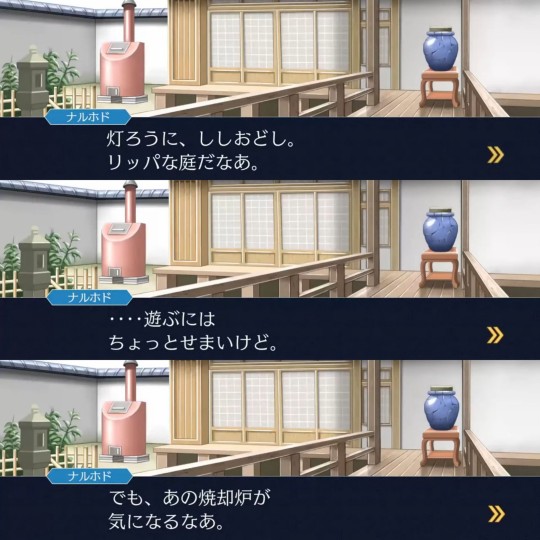
灯ろうに、ししおどし。リッパな庭だなあ。
tōrō ni, shishi odoshi. Rippana niwada nā.
Tōrō lanterns and Shishiodoshi. What a nice garden.
・・・・遊ぶには ちょっとせまいけど。
asobu ni wa chotto semaikedo.
... It's a little small to play in though.
でも、あの焼却炉が気になるなあ。
demo, ano shōkyakuro ga ki ni naru nā.
But I'm curious about that incinerator.

鹿威し (ししおどし) [shishiodoshi] - water-filled bamboo tube which clacks against a stone when emptied, device for scaring birds from gardens
___________________________________________

床の間。・・・・ぼくにはどうも、 この空間のイミがわからない。
tokonoma. Boku ni wa dōmo, kono kūkan no imi ga wakaranai.
Tokonoma. ...I don't really understand the meaning of this space.

事務所にこんなものがあったら、 あっという間に物置だな。
jimusho ni kon'na mono ga attara, attoiumani monookida na.
If I had something like this in my office, it would just turn into a storage room.

しかしここには、きれいな花とシャレた掛け軸がかざってある。
shikashi koko ni wa, kireinahana to shareta kakejiku ga kazatte aru.
But there are beautiful flowers and stylish hanging scrolls here.
Tokonoma is an alcove or niche in the wall of a traditional Japanese home, one of the 4 main components of the main room of a Japanese aristocratic house.
Tokonoma should contain only art objects, such as kakemono - a scroll with a painting or a calligraphically written saying, motto or poem. Also, a small flower arrangement (ikebana) is a common attribute.
Interesting fact: according to Japanese etiquette, the most important guest sits with his back to the tokonoma.
Now pay attention to where and how the futon is located, on which the guest in the beret slept (if she had sat down on the futon, she would have ended up with her back to the tokonoma). Here you have a "simple student studying the occult".
Well, the fact that Naruhodo sees no point in having such a space in the house and is ready to use it as a warehouse, completely ignoring its original purpose, tells us that for him it is considered a relic of the past and has no sacred meaning (even as an art object). He is a modern resident of modern Japan, where there is no place for such traditions.
___________________________________________

そういえば、障子を見るのもひさしぶりだな。
sō ieba, shōji o miru no mo hisashi-burida na.
Now that I think about it, it's been a while since I last saw a shoji screen.
___________________________________________

青あおとしたサカキが まつられている。
aoao to shita sakaki ga matsura rete iru.
A blue Sakaki tree is enshrined here.
Cleyera japonica (sakaki) is a flowering evergreen tree. It is considered sacred to Japanese Shintō faith, and is one of the classical offerings at Shintō shrines. In Shinto ritual offerings to the "gods; spirits" (神, kami), branches of sakaki are decorated with paper streamers (shide) to make tamagushi.

It turns out to be quite interesting - if a person is not familiar with these interior items, then not only will he not tell anything about them, but he will not even know what they are called. Naruhodo, whose childhood fell at the end of the 20th - beginning of the 21st century, could have learned about this only in a couple of cases:
1. He had been in a traditional Japanese house before, saw these items and was told about them by older relatives;
2. He independently studied old interior items (which is not surprising, because he studied art at the university).
This is also confirmed by his comment about shoji: "it's been a while since I last saw a shoji screen".
That is, he saw all this with his own eyes, but quite a long time ago.
Naruhodo is quite well educated in the culture of his own country, although some things have already lost their sacred meaning for him and are not used by him (and, possibly, his family) in everyday life.
Let's continue in the next part.
#ace attorney#gyakuten saiban#phoenix wright#naruhodo ryuichi#i said what i said#in the gks universe together with croq#long time no see
95 notes
·
View notes
Text


Notice from Shusse Inari Shrine of America! EARTH DAY SHINTO CEREMONY LIVESTREAM on Monday April 22nd, 2024 at 7:00pm (19:00) PDT! YouTube Link: https://www.youtube.com/live/pNBrPLa6WsM?si=8foclAbHzUbIpchf Please come join if you are able to!
#shinto#shinto shrine#shusse inari shrine of america#shusse inari shrine#inari faith#inari shrine#inari shinto
45 notes
·
View notes
Text
Fansub release for Utena ep 19 + Japanese culture lesson

Utena: やっぱり若葉って普通の女の子なんだね。きっといいお嫁さんになるよ。
WHAT a loaded line. Let’s look at my translation of the first part:
Utena: You’re such a normal girl, Wakaba.
I think this line shows that at this point in the story, Utena has come to terms with the fact that they’re not a “normal” girl, but despite this self-recognition, they still see normalcy as something inherently good that one should strive for. They’re still in the clutches of an idealised status quo. Now let’s look at the next part. A literal translation would be:
Utena: I'm sure you'll make a good bride. (from ohtori.nu)
But like… who says it like this in English anymore? While this phrasing sounds natural in Japanese, it sounds extremely old fashioned and weird in English. How would a native English speaker voice the same thought? I think it would be something like this:
Utena: You’ll probably make some guy very happy. (my translation)
This means the same thing, but sounds much more natural. This is another example of how to be a good translator, you need to be a good writer. You can’t just transpose words of the same meaning, you have to understand the thought behind the words, and then write a new sentence with the same thought behind it, but in the target language.

Wakaba: そうよ。ようやく気づいたの。やっぱり私はあの王子様が好きなんだって… そして、神様のおかげで王子様もやっと私の事振り向いてくれるようになったのかなって。
Wakaba: You’re right. I finally realised. I do love that prince of mine. And maybe, somehow… Something will finally happen between us.
There are a few things I want to talk about in this passage. First of all, 神様のおかげで. This is a phrase that literally means “because of the kami-sama (/positive)”. It’s often translated as “thanks to God” or “by the grace of God” or “thanks to divine intervention”, but to translate it this way is to erase the nuances of Japanese religious custom and worse, Christianise a non-Christian character.
In Japanese culture, Shinto and Buddhism are seen by the vast majority of people not as religions, but as customs. According to several surveys, approximately 70% of Japanese people specify they have no personal faith, despite statistical research showing that about 70% of Japanese people practice Shinto rites and practices, and another 70% of Japanese people practice Buddhist practices. This is because Japanese people follow these practices as a matter of culture and custom, not of faith. Participation rates in 初詣 (hatsumode), the first shrine visit of the year, are extremely high despite many participants not truly believing in the spiritual aspect. In Japan, Shinto and Buddhism are more about tradition and participation than faith and affiliation. And this is just based on anecdotal evidence from my own life, but I think a lot of Japanese people wouldn’t be able to explain the difference between Shinto and Buddhist belief systems. They all get blended together as part of the culture. Shinto and Buddhism ARE Japanese culture. The teachings of those religions inform the Japanese way of looking at and interacting with the world, despite the spiritual elements not being directly believed by many Japanese people.
On top of that cultural background, the concept of “kami-sama” (or just “kami”) are not God, or even gods. Generally, Shinto kami are more spirit than god, with kami said to inhabit everything from ancient trees to ramen bowls. In a way, they’re like the essence of the world. One could even say they are “the universe”, in the same way that secular English speakers might say “the universe is trying to tell me something”.
I don’t believe this line is showing that Wakaba is a believer in Shinto. It’s just showing that she believes that the universe is rotating in a favourable way for her. The “kami-sama” that she mentions are not literal kami or gods, but simply an indication that, through no direct action of her own, something good is happening to her (I have confirmed this interpretation with my dad, who is Japanese and was raised in Japan).
Wew… okay. Onto the second thing I wanted to talk about in this passage LOL
王子様もやっと私の事振り向いてくれるようになった
The final translation for this line was:
Something will finally happen between us.
But a more literal translation would be:
He’s finally looking my way.
In fact, I actually liked this more. I thought the imagery from the original Japanese was nice, and it translated directly quite well. The only problem was that pesky pronoun…
As Anya rightfully pointed out, you could read this as a setup for Utena being Wakaba’s prince. Certainly it’s all there in the text — Wakaba did repeatedly insist that “it’s not like that” between her and Tatsuya, she often treats Utena like a boyfriend, and it would even explain her getting flustered after Utena pressures her to reveal who her “prince” is at the lunch table. And let’s not forget Tatsuya’s line “I noticed that she looks the happiest when she's with you, Utena.”
Some of this exchange had to be rewritten to completely avoid using any singular pronouns, lest we spoil the reveal at the end. For example, this line had to be changed from a focus on the prince to an indirect line about the both of them. I think the line still captures the general sentiment, but it’s a shame it had to change so much from the original phrasing!

Thanks to @dontbe-lasanya for the amazing editing, especially for picking up the pronoun issue when talking about the prince!
Follow my blog if you'd like to stay up to date with new episode releases! You can see all episodes released so far here:
Rose divider taken from this post
#revolutionary girl utena#rgu#shoujo kakumei utena#sku#utena#translation#japanese culture#japan#japanese language#langblr#utena fansub#official blog post
68 notes
·
View notes
Note
Divinity: The AU opened up with Izuku accidentally summoning a goddess by praying for a quirk, and Momo explaining she couldn't grant him one YET. Was it ever established if/when she would gain enough power to actually grant that wish and what his quirk would be? Because on one hand, I imagine that must be a relatively big wish, fundamentally altering someone's biology like that, and his enchanting thing is close enough to a quirk that Izuku is probably already THRILLED with that ability. But on the other hand, it's MOMO, and there's no way she wouldn't grant the wish of her first follower, her high priest, and her maybe boyfriend, as soon as she was powerful enough to reasonably do so.
It also said (or at least implied) that she was a forgotten deity and used to have followers in the past. I'm picturing Momo dragging Izuku to a museum and the two come across depictions of Past!Momo in some display about 'ancient local shinto deities' or some such, and Momo reacts with the exact same sort of embarrassment as a teenager when their parent pulls out the baby photo album in front of their significant other.
I did not establish how much faith it would take to Create a Quirk, but it would be less than it takes to Create new life entirely. The way her Creation powers work is effectively that reality attempts to justify whatever she did. For example, if she wanted to Create a mansion, it might also expand the space to accommodate, as if the planet had always been that slight bit larger. This is the same principle behind her Creating Quirks or similar alterations to something.
Midoriya absolutely is thrilled with the whole enchanting thing. Not only is having a large selection of minor powers he can swap in and out perfect for someone like him, the fact that he's basically learning a divine language for it is cool as hell. But you are also correct that Yaoyorozu will fulfill her high priest's wish.
I absolutely love this; her reacting to any of the documentation about her would be incredible, from things that are annoyingly wrong to embarrassingly true
55 notes
·
View notes